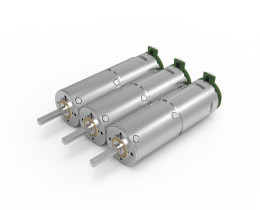Unlocking the Mystery of Your Motorcycle’s Heart: Why a Gearbox Diagram Matters
Let’s talk about something most riders glance over but secretly wish they understood better: the motorcycle gearbox. Imagine this—you’re cruising down an open road, wind in your face, but suddenly, your bike hesitates. That smooth ride turns clunky. What’s going on? The answer might lie in a tiny, overlooked detail: a gear shift pattern diagram.
.webp)
You’ve probably seen one before—a simple schematic showing how gears mesh, shift, and transfer power. But here’s the kicker: not all diagrams are created equal. A poorly designed diagram is like a blurry map; it’ll leave you guessing. A crisp, accurate one? That’s your shortcut to mastering your machine.
“Why should I care about a piece of paper with lines and numbers?”
Glad you asked. Think of it as your bike’s DNA. Every rattle, every missed shift, every moment of hesitation traces back to how well you (or your mechanic) understand that diagram. KPOWER’s gearbox diagrams don’t just show you the parts—they explain them. Color-coded paths, laser-etched labels, and 3D-inspired layouts turn confusion into clarity.
But Wait—What Makes a Diagram “Good”?
Let’s get nerdy for a second. A functional diagram does two things: it educates and it endures. Ever tried squinting at a faded, crumpled schematic mid-repair? KPOWER uses weather-resistant materials and anti-glare coatings so your diagram survives grease stains, coffee spills, and that time you accidentally dropped it in a puddle. Practical? Absolutely. Overkill? Never.
“Okay, but how does this affect my ride?”
Picture this: You’re customizing your bike. A vague diagram leaves you second-guessing gear ratios. A precise one lets you tweak confidently, knowing exactly how each adjustment impacts performance. KPOWER’s designs include torque flow arrows and load distribution notes—subtle details that scream “we’ve got your back.”
Story Time: A Tale of Two Repairs
Last summer, a rider (let’s call him Jake) tried rebuilding his vintage bike using a generic diagram. Three weeks later, he was stuck with a gearbox that growled like a bear. Then he switched to a KPOWER schematic. Two hours. That’s all it took to spot the misaligned shifter fork he’d missed.
Moral of the story? Clarity saves time. Time saves money. And saving money means more cash for… well, more bikes.
Q&A Detour
“Do I really need a high-end diagram for basic maintenance?”
Depends. If you enjoy guessing games, maybe not. But if you’d rather spend 20 minutes fixing something instead of 20 hours? Yeah, it’s worth it.
“What if I’m not a mechanic?”
KPOWER’s diagrams aren’t just for pros. They’re designed for anyone who’s ever held a wrench. Think IKEA instructions, but for motorcycles—minus the frustration.
Final Gear Shift
A gearbox diagram isn’t just a tool. It’s a conversation between you and your bike. The better you understand it, the smoother that conversation flows. KPOWER doesn’t sell schematics; they sell confidence. Because when you’re flying down the highway, the last thing you want to worry about is whether your gears are playing nice.
So next time you pop the hood, ask yourself: Is my diagram working as hard as I am? If not, maybe it’s time to upgrade. Your bike (and your sanity) will thank you.


































.webp)

